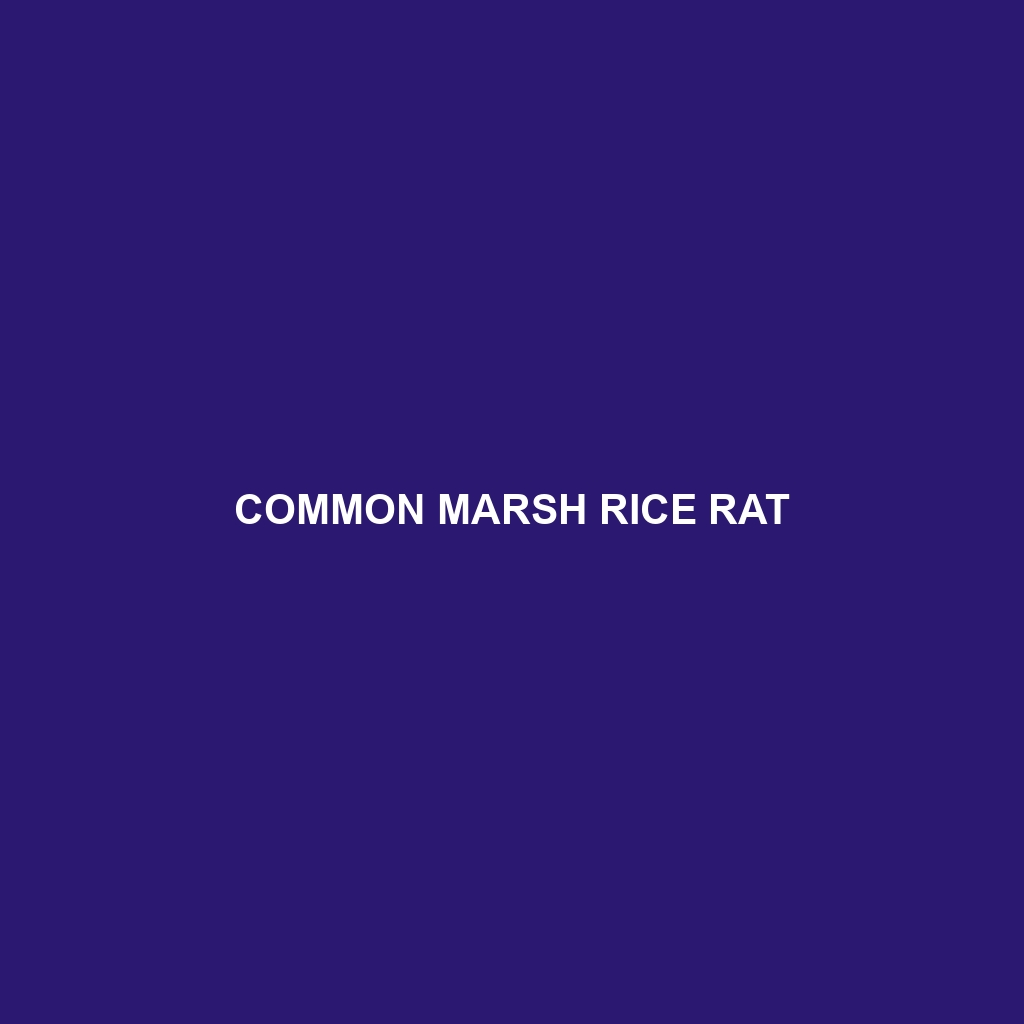Common Marsh Rice Rat ()
Common Name: Common Marsh Rice Rat
Scientific Name:
Habitat
The Common Marsh Rice Rat is primarily found in freshwater marshes, wetlands, and riparian zones across the southeastern United States, extending into parts of Central America. This rodent thrives in areas with dense vegetation, such as cattails and sedges, making it particularly adapted to environments rich in water and plant cover.
Physical Characteristics
This species typically measures between 25 to 35 centimeters in length, including a long, scaly tail. The fur is generally a mix of brown and gray, providing excellent camouflage against its marshy surroundings. Distinctive features include long whiskers, large ears, and webbed toes, which aid in swimming and foraging in its aquatic habitat.
Behavior
Common Marsh Rice Rats are predominantly nocturnal, displaying behaviors such as foraging at night and building nests in dense grasses or marsh vegetation. They are exceptional swimmers and often use water channels to escape from predators. Socially, these rodents can be somewhat territorial, especially males during mating season.
Diet
The diet of the Common Marsh Rice Rat primarily consists of seeds, fruits, and aquatic plants. They are also known to consume insects and small crustaceans, showcasing an omnivorous feeding habit that adapts to available food sources in their wetland environment. Their foraging behavior is crucial during seasons when particular food items become scarce.
Reproduction
Reproductive activity in the Common Marsh Rice Rat typically peaks during the warmer months, with a breeding season that can span from spring to late summer. Females usually give birth to litters of 3 to 8 young after a gestation period of approximately 25 days. The young are weaned at around 3 weeks and reach sexual maturity by 3 to 4 months.
Conservation Status
The conservation status of the Common Marsh Rice Rat is currently classified as least concern, though habitat loss due to wetland drainage and urban development poses potential threats to its populations. Maintaining healthy wetland ecosystems is essential for the long-term survival of this species.
Interesting Facts
Common Marsh Rice Rats are known for their ability to dive underwater for extended periods, which helps them evade predators. Additionally, they can adapt their diet based on seasonal availability, showcasing their resilience in fluctuating environments.
Role in Ecosystem
As both prey and predator, the Common Marsh Rice Rat plays a vital role in its ecosystem. They help control insect populations while serving as a food source for various predators, including owls, hawks, and snakes. Their foraging activities contribute to seed dispersal, promoting plant diversity in marsh habitats.
